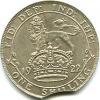|
|
The current range of books. Click the image above to see them on Amazon (printed and Kindle format). More info on coinpublications.com |
|
|

Your thoughts re this slabbed coin please?
By
Rob, in TPG Discussions
 Coinpublications.com
Coinpublications.com